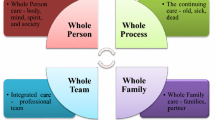Abstract
In the present society, most families are double-income families, and as the long-term care is seriously short of manpower, it contributes to the rapid development of tele-homecare equipment, and the smart home care system gradually emerges, which assists the elderly or patients with chronic diseases in daily life. This study aims at interaction between persons under care and the system in various living spaces, as based on motion-sensing interaction, and the context-aware smart home care system is proposed. The system stores the required contexts in knowledge ontology, including the physiological information and environmental information of the person under care, as the database of decision. The motion-sensing device enables the person under care to interact with the system through gestures. By the inference mechanism of fuzzy theory, the system can offer advice and rapidly execute service, thus, implementing the EHA. In addition, the system is integrated with the functions of smart phone, tablet PC, and PC, in order that users can implement remote operation and share information regarding the person under care. The health care system constructed in this study enables the decision making system to probe into the health risk of each person under care; then, from the view of preventive medicine, and through a composing system and simulation experimentation, tracks the physiological trend of the person under care, and provides early warning service, thus, promoting smart home care.
























Similar content being viewed by others
References
Guessoum, D., Miraoui, M., and Tadj, C., Survey of semantic similarity measures in pervasive computing. International journal on smart sensing and intelligent systems 8(1):125–158, 2015.
Ameyed, D., Miraoui, M., and Tadj, C., A spatiotemporal context definition for service adaptation prediction in a pervasive computing environment. International Journal of advanced studies in computer science and engineering 4(4):6–14, 2015.
Alan, J., Marin, P. and Dragan, G. (2007), Ontologies in Medical Knowledge Representation, Information Technology Interfaces, 29th International Conference, IEEE, pp. 535–540.
Benharref, A.Serhani, M.A.Nujum, A.-R (2014). Closing the loop from continuous M-health monitoring to fuzzy logic-based optimized recommendations, Engineering in Medicine and Biology Society (EMBC), 2014 36th Annual International Conference of the IEEE, pp. 2698–2701.
Pietro Gonizzi, Gianluigi Ferrari, Vincent Gay and Jeremie Leguay (2015). Data dissemination scheme for distributed storage for IoT observation systems at large scale, vol. 22 pp. 16–25.
Becker, M., Werkman, E., Michalis, A. and Kleinberger, T (2006). Approaching Ambient Intelligent Home Care Systems, Pervasive Health Conference and Workshops, IEEE (2006), 1–10.
Distefano, S., Merlino, G., and Puliafito, A., A utility paradigam for IoT: The sensing colud. Pervasive and mobile computing 20:127–144, 2015.
Bhunia, S.S.Dhar, S.K.Mukherjee, N(2014). iHealth: A fuzzy approach for provisioning intelligent health-care system in smart city, Wireless and Mobile Computing, Networking and Communications (WiMob), 2014 I.E. 10th International Conference, pp. 187–193.
Wu, C.-L., and Fu, L.-C., Design and Realization of a Framework for Human-System Interaction in Smart Homes. IEEE Transactions on Systems, Man and Cybernetics, Part A: Systems and Humans 42(1):15–31, 2012.
Chang, Y. J., Chen, S. F., and Chuang, A. F., A gesture recognition system to transition autonomously through vocational tasks for individuals with cognitive impairments, [J]. Res Dev Disabil 32:2064–2068, 2011.
Wei-Guang Teng & Ping-Lin Chang (2012), Identifying Regions of Interest in Medical Images Using Self-Organizing Maps, Journal of Medical Systems, pp. 2761–2768.
Chen, H., Finin, T., and Joshi, A., An Ontology for Context-Aware Pervasive Computing Environments. Workshop on Ontologies and Distributed Systems 18(3):197–207, 2003.
Cantais, J., Dominguez, D., Gigante, V.,Laera, L. and Tamma, V(2005). An example of food Ontology for diabetes control, Proceedings of the ISWC 2005 Workshop on Ontology Patterns for the Semantic Web.
Yen, J., and Langari, R., Fuzzy Logic Intelligence, Control, and Information. Prentice Hall, Upper Saddle River, 1999.
Michael, C. D., Leo, J. O., and Kevin, T. S., The Semantic Web : A Guide to the Future of XML, Web Services, and Knowledge Management. Wiley, New York, 2003.
Noy, N. F., and McGuinness, D. L., Ontology Development 101: A guide to creating your first ontology. Knowledge Systems Laboratory Tech Report KSL-01-05 Stanford University, Stanford, 1998.
Niemala, M., Fuentetaja, R. G., Kaasinen, E., and Gallardo, J. L., Supporting Independent Living of the Elderly with Mobile-Centric Ambient Intelligence: User Evaluation of Three Scenarios. LNCS 4794:91–107, 2007.
Passornpakorn, W. Kamolphiwong, S. Kamolphiwong, T.(2013). Design framework for ontology based interactive e-health services, Ubiquitous and Future Networks (ICUFN), 2013 Fifth International Conference, pp. 389–394.
Phongsuphap, S.Pongsupap, Y.(2014), Evaluation of responsiveness of health systems using fuzzy-based technique, Fuzzy Systems (FUZZ-IEEE), 2014 I.E. International Conference, pp. 1618–1623.
Shah, T. Rabhi,F. Ray, P.K.(2013). OSHCO: A Cross-domain Ontology for semantic interoperability across medical and oral health domains, e-Health Networking, Applications & Services (Healthcom), pp. 460–464.
Fernández, Y. B., Pazos Arias, J. J., Nores, M. L., Solla, A. G., and Carber, M. R., AVATAR: An Improved Solution for Personalized TV based on Semantic Inference. IEEE transactions on Consumer Electronics 52(1):223–231, 2006.
Şen, B., Peker, M., Çavuşoğlu, A., and Çelebi, F. V., A Comparative Study on Classification of Sleep Stage Based on EEG Signals Using Feature Selection and Classification Algorithms. Journal of Medical Systems 38:18, 2014.
Acknowledgments
This work was supported by the Ministry of Science and Technology of Republic of China under grant MOST 103-2218-E-029-002.
Author information
Authors and Affiliations
Corresponding author
Additional information
This article is part of the Topical Collection on Mobile Systems.
Rights and permissions
About this article
Cite this article
Chiang, TC., Liang, WH. A Context-Aware Interactive Health Care System Based on Ontology and Fuzzy Inference. J Med Syst 39, 105 (2015). https://doi.org/10.1007/s10916-015-0287-2
Received:
Accepted:
Published:
DOI: https://doi.org/10.1007/s10916-015-0287-2




